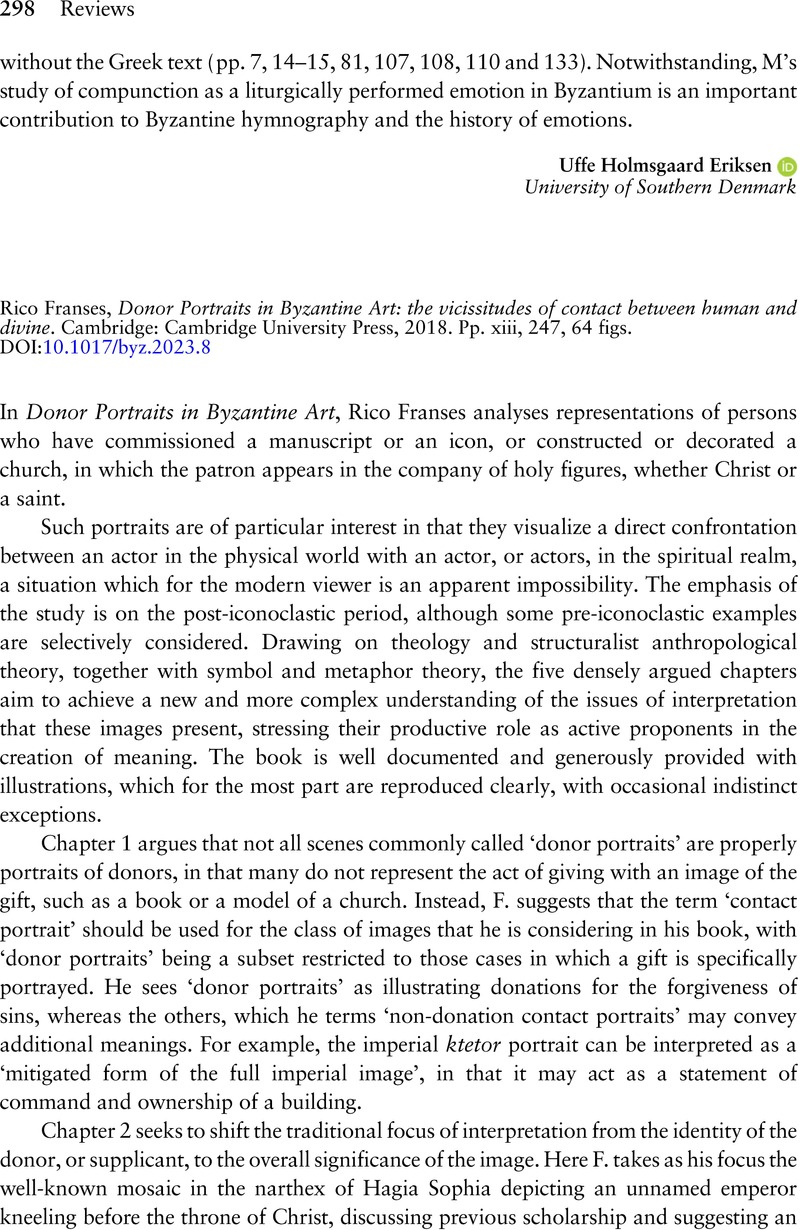No CrossRef data available.
Published online by Cambridge University Press: 12 September 2023

1 Agapitos, P. A., ‘The Word as Animated Image: Inscribed Texts in the Frescoes of the Church of the Virgin Mary at Laghouderá, Cyprus (AD 1192)’, in Papageorghiou, A., Bakirtzis, Ch., and Hadjichristodoulou, Ch. (eds.), The Church of Panagia tou Arakos (Nicosia, 2018) 93–4Google Scholar.